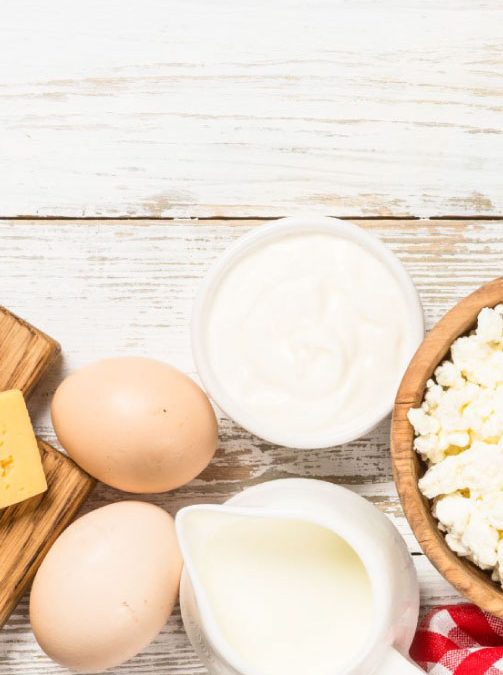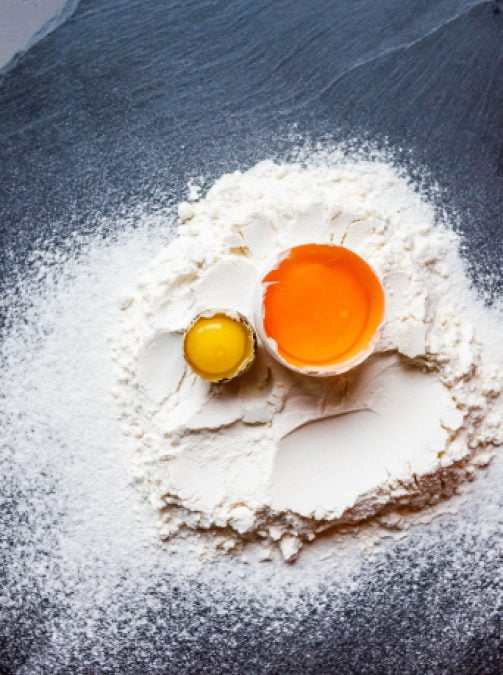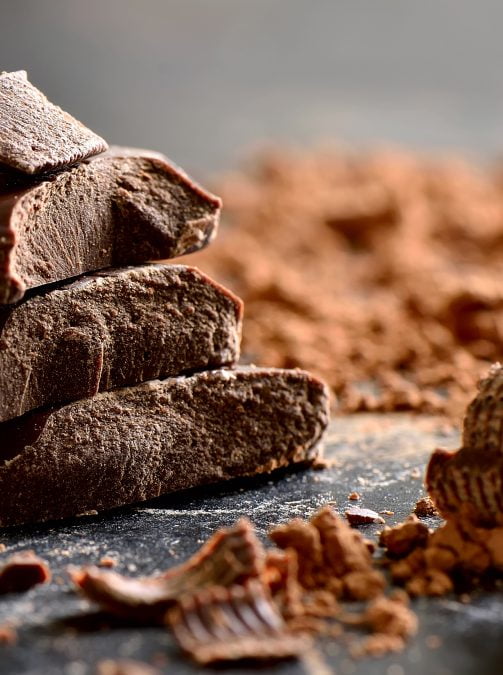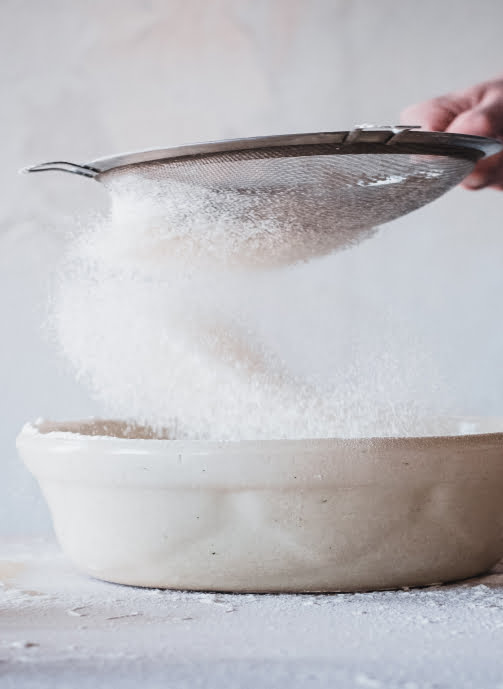
Sucrose
Sucrose is the most common type of sugar, it is naturally present in ripened fruits, plants, honey and maple tree sap.
Commercial production of white sugar (99.9% sucrose) involves purifying the natural sucrose from sugar cane or sugar beets. This is then sold in different size grains as granulated, caster or icing sugar.
The grain size is expressed in microns (one millionth of a meter) grains less than 45 microns aren’t easily felt in the mouth.
Lactose
A type of sugar found in most mammals’ milk. It is made up of glucose and galactose, two simple sugars used directly by the body for energy. The enzyme lactase splits lactose into these two parts to be used for energy. Lactose is the sugar found in all dairy products that have been produced from the milk of an animal.
Glucose
Glucose is the most common sugar in nature. You can find glucose in nearly all ripe fruit and it is what is referred to as ‘blood sugar’ high levels of which is dangerous for people with diabetes.
Read More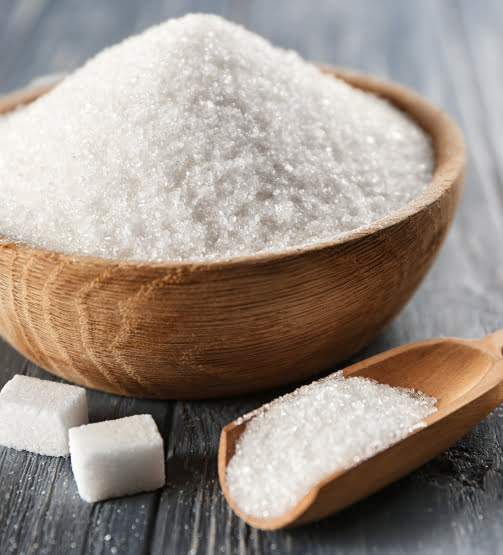
Sugar cane is a tall reed like grass that was first cultivated eight thousand years ago in the south pacific. It then found it’s way to India, China and the middle east. These regions have used sugar for two or three thousand years.
Europeans wide use of sugar came a lot later with the colonisation of the West Indies by Spain. By the 1600’s it was widely available in Europe but still expensive. The slave trade was then introduced to increase production and the development of more efficient refining methods brought down the price in the 1800’s, making sugar accessible to the middle class.
In the 1700’s sugar beets started to be processed into sugar. This is less labour intensive and can be cultivated in milder climates, the anti slavery movement also fuelled the use of sugar beets as a method for producing sugar.
Sugar beets have been refined over centuries and now contain about 17% sucrose, which is slightly more than sugar cane. Sugar beets are now the predominant source of European sugar.
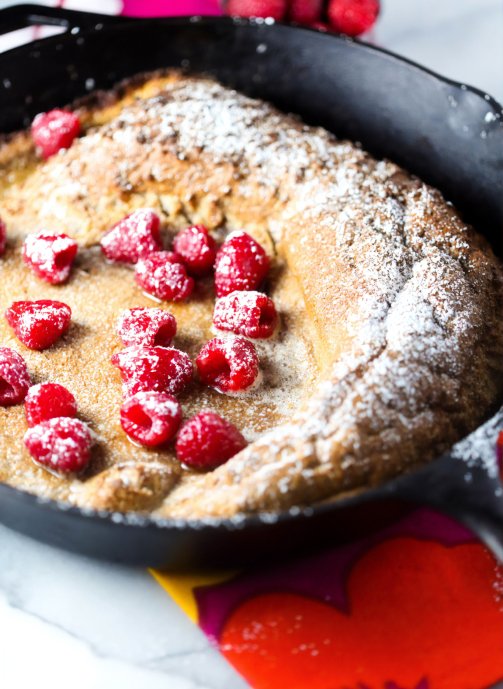
Producing sugar involves two steps, milling and refining.
Milling involves taking raw sugar from beets or cane and refining is the process of turning this molasses covered raw sugar into pure white sugar or it’s less refined alternatives such as brown sugar.
The first step is to crush the fresh sugar cane and extract the juice with water. Calcium hydroxide and carbon dioxide are then added to the cloudy juice to trap impurities (fat, fibre and debris) which sink to the bottom and are drained off from the clear juice. Water is then evaporated to reduce it to a thick golden syrup. This is then divided into wide heated vacuum pans which concentrate it further. Once the syrup is concentrated enough, sugar crystals start to form. The crystallised mixture is then spun in a centrifuge to separate the crystals from the remaining liquid (molasses). This process is repeated a few times to get as much sugar separated as possible
The sugar comes out of this process as light brown raw sugar, which then can be further refined to white sugar.
To get pure white sugar the light brown sugar is then sent to a sugar refinery where it goes through a process of washing and centrifuging to remove the last of the impurities. It is also passed through a carbon filter to decolourise and further purify the sugar, just the same as filtering water.
Read More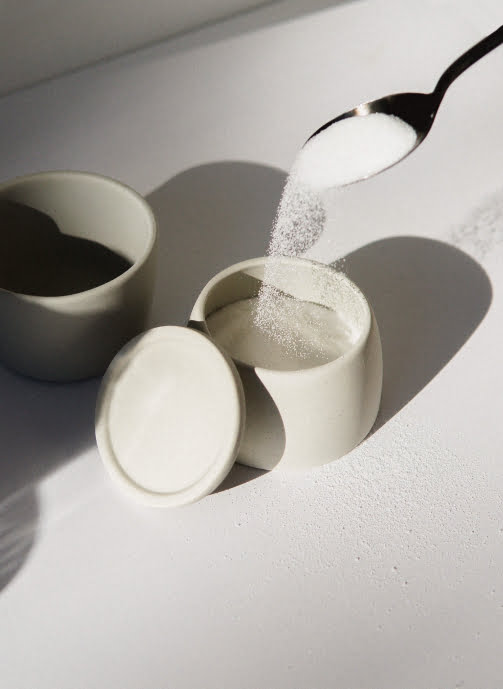
Caster sugar
Named after the small container used to serve sugar in Britain. This is the most common sugar used in baking. It is great for sponges since it dissolves quickly and allow the incorporation of smaller ait pockets in sponges and meringues
Granulated sugar
Usually used for syrups, sprinkling on fruit or the top of baked goods for a crunchy effect. Since the larger crystals are harder to dissolve it can cause grittiness, so it is not used as much in mixes.
Icing sugar
Also known as confectioners’ sugar, this is a fine powder made from refined white sugar. If needed, this can easily be made by placing caster or granulated sugar in a grinder/ blender and grinding to a fine powder.
Neige décor
Icing sugar made from corn starch. This is designed not to melt in humidity like regular icing sugar so is a favourite with pastry chefs for dusting products that are moist or hot.
Read More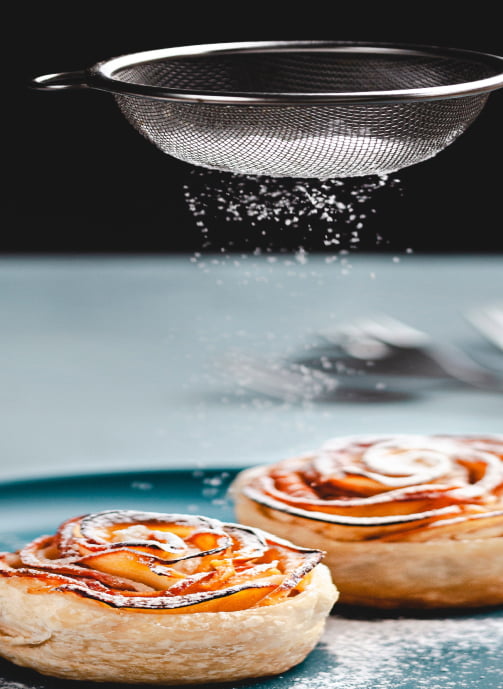
Sweetening
Widely considered the only function of sugar, however it is more important in pastry goods than just providing sweetness.
Different sweeteners and sugars will all have their own degree of sweetness, for example, dextrose is used in savoury ice creams to provide the properties of sugar without the sweetness.
Tenderising
When sugar dissolves it interferes with gluten formation and other structures by attracting water away from the gluten eggs and starch that all need water to form.
Sugar also increases the temperature that starches gelatinize and proteins coagulate giving a more tender texture. However too much sugar will prevent any structures forming which means products won’t rise or rise and collapse as soon as it comes out of the oven.
Too low sugar content can be seen on a cake by large cracks in the surface where structure has formed too quickly and steam has forced it’s way out of the top. Leaving a split in the top or side.
Read More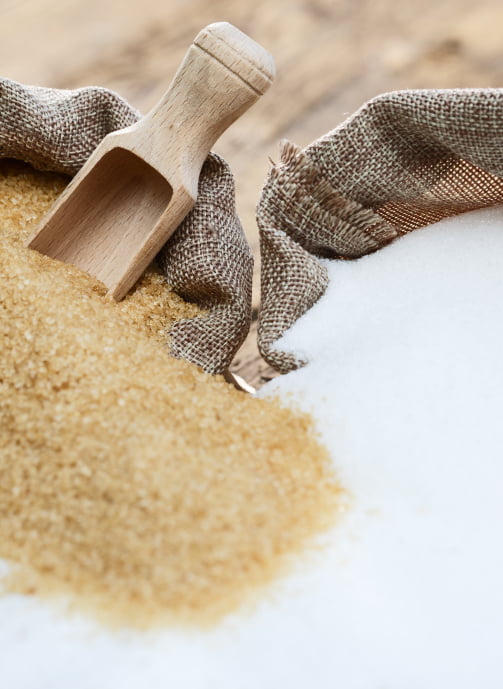
Sugar syrups are sometimes described by their content of solids. The Brix and Baume scales give a measurement which is measured by an Saccharometer (or hydrometer). The measurements are taken by measuring the “specific gravity” of a syrup which relates to the density.
For example, a syrup with 80% sugar and 20% water would measure 80 degrees Brix (43 degrees Baume)
The Brix and Baume scales can be measured using the same technique and are much like degrees Fahrenheit and Celsius, just a different scale for the same data
The two measurements can be converted using the formula below
Baume = 0.55 x Brix
Brix = Baume / 0.55
This is useful when making products such as sorbets, since at different times of year the fruit juices will have different sugar contents and this needs to be corrected to get the same texture in the end result.
Read More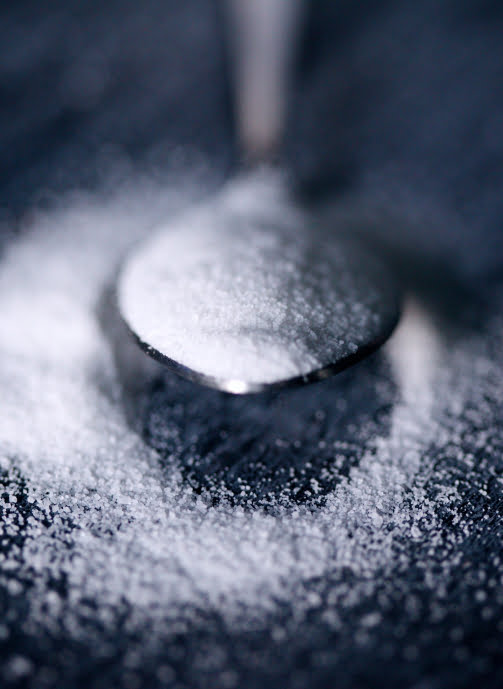
Fructose
Fructose is naturally occurring monosaccharide found in honey, fruits, and most root vegetables. The powder form is sourced from beetroot, fruits, sugar cane, and corn. While fructose is the sweetest tasting sugar, it has a lower impact on blood sugars than glucose or sucrose (table sugar).
Studies have shown that both fructose and glucose are absorbed directly into the bloodstream. However fructose on the other hand doesn’t impact insulin levels. This is one of the reasons why fructose is a recommended ingredient for those who are diabetics or are going through a strict diet. Though it is slightly different in taste, the substitution of table sugar with fructose is rarely noticed.
If you’re using fructose in baking, you’ll need about 1/3 less fructose than table sugar, and you won’t need to compensate for the reduced volume. This is because fructose attracts more water and increases the height of baked items. It also makes baked goods remain moister for longer. Other than baking and crystallisation, fructose can also be added to glazes and dairy products to increase their viscosity. It will add more creaminess to ice creams, sauces, or marinades.
Read MoreHAVE A QUESTION?
Talk to the Chef

